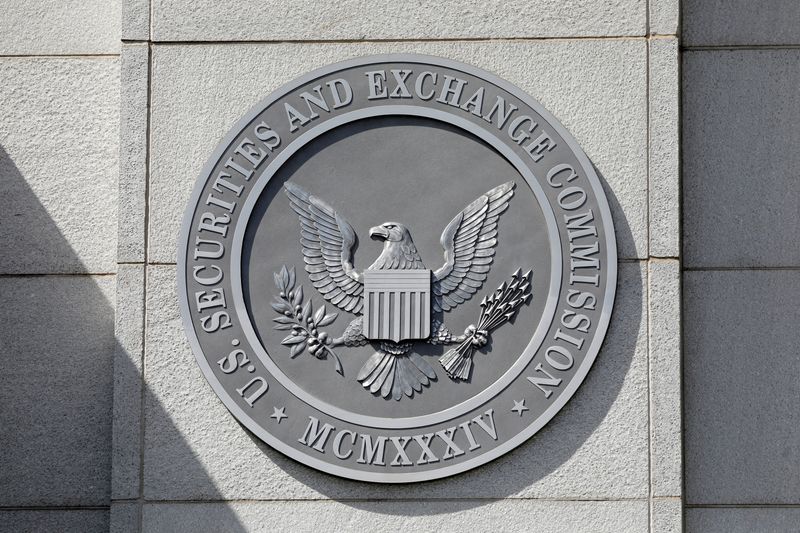Month: February 2024
Asian FX bears hold ground as robust dollar, China woes dent confidence: Reuters poll
Post Content
Asia FX gains some ground as dollar retreats; China weakness persists
Post Content
TradeStation to pay $3 million to settle charges from SEC, states over unregistered crypto product
Post Content
EIA Mining Survey Looms Large Over Bitcoin Mining Industry
The below is an excerpt from a recent edition of Bitcoin Magazine Pro, Bitcoin Magazine’s premium markets newsletter. To be among the first to receive these insights and other on-chain bitcoin market analysis straight to your inbox, subscribe now.
Bitcoin miners have not been operating under normal circumstances for the past several months. Bitcoin’s blockchain has seen a particularly intense degree of demand over the past several months, and it looks like BRC-20s, and to a lesser extent, image inscriptions, all made possible by the Ordinals protocol, bear a great deal of responsibility. Essentially, this protocol enables users to inscribe unique data on the most minute denominations of bitcoin, allowing them to create new “tokens” directly on Bitcoin’s blockchain. This means that quantities of bitcoin worth pennies in terms of their fiat value may nevertheless be bought and sold multiple times, with every one of these transactions needing to be processed through the same blockchain, not to mention the high demand seen while initially minting.
This is where the Bitcoin miners come in. The energy-utilizing computations undertaken by specialized mining hardware are not only meant to generate new bitcoin, but they also can be used to verify the blockchain’s transactions and keep the digital economy flowing smoothly. With network usage about as high as it’s ever been, miners have more than enough opportunities to earn revenue just by processing these transactions, and the actual production of newly-issued Bitcoin can take something of a backseat. As of February 2024, these conditions have created a situation where mining difficulty is higher than ever before in Bitcoin’s history, yet the industry is raking in large profits. However, one of the most reliable patterns in the Bitcoin market has been the sheer chaos that sees fees spike and then plummet. So, what will happen to miners after these conditions change?
It’s this ecosystem that became quite disturbed on January 31 when federal regulators declared a new mandate: the EIA, a subsidiary of the US Department of Energy (DOE), was going to begin a survey of electricity use from all miners operating in the United States. Identified miners will be required to share data on their energy usage and other statistics, and EIA administrator Joe DeCarolis claimed that this study will “specifically focus on how the energy demand for cryptocurrency mining is evolving, identify geographic areas of high growth, and quantify the sources of electricity used to meet cryptocurrency mining demand.” These goals seem straightforward enough at first glance, but several factors have given Bitcoiners pause. For one thing, Forbes claimed that this directive came from the White House, which referred to this action as an “emergency collection of data request.” This survey is explicitly created with the goal of examining the potential for “public harm” from the mining industry, and even included an aside that this “emergency” collection might lead to a more routine collection expected from every miner in the near future.
Obviously, language like this has left many in the community extremely uneasy, and several leading miners have already made statements condemning the initiative. The tone coming from regulators seems to be of an overwhelming narrative that these businesses are a potential threat, whether by increasing carbon emissions, taxing electrical infrastructure, or being a public nuisance. Some of the most egregious claims are easily debunked, but it doesn’t change the reality that a few hostile government actions could greatly upset this ecosystem. Furthermore, the world of mining already has a major upset on the horizon, in the form of the impending Bitcoin halving. This regular protocol baked into Bitcoin’s blockchain is set to automatically cut mining rewards in half sometime in April, at block 840,000, and already some pessimists are claiming that this upset will be enough to put nearly the entire industry out of business. What are the actual worst case scenarios here? What are the most likely ones?
First, it’s important to examine some of the factors inherent to Bitcoin that are likely to impact miners, regardless of government pressure. The miners are in a bizarre market situation because transaction fees can generate revenue on the same level as actual mining, but the situation may be stabilizing. New data shows that Ordinals sales plummeted by 61% in January 2024, showing that their impact on blockspace demand is likely to diminish. So, if certain miners are depending on these tokens to maintain profits, that revenue stream is not looking particularly dependable. However, even though network usage from these microtransactions is likely to plummet, regular transactions are actually looking great. The trading volume of bitcoin is higher than it has been since late 2022, and it shows no signs of stopping. Surely, then, there will be plenty of demand for the minting of new bitcoin.
Bitcoin traffic has been increasing for several months as the prospect of a legalized Bitcoin ETF became more and more real, and now that this battle is over, the trading volume has increased at a greater rate. While the halving can present opportunities and challenges for miners, none can claim that it’s an unexpected event. Firms have been preparing for it as a matter of course, with around $1B of this increased trading volume coming from miners themselves. Reserves of bitcoin held by miners are at their lowest point since before the spike in 2021, and miners are using the capital from these sales to upgrade equipment and ready themselves.
In other words, independent of any government action, it seems that the market conditions are likely to shift due to these factors. The bottom may fall out for some of the smaller firms that operate on slim margins, but the overall growth in Bitcoin trading volume means that there will always be opportunities to make revenue. Since it’s the most well-capitalized firms that can make the most extensive preparations for the halving, it may very well come to pass that some of the more inefficient mining companies will not be able to survive. From a regulatory standpoint, perhaps that is a wanted outcome.
The federal government seems mostly concerned with perpetuating the idea that the mining industry is a tax on society as a whole, consuming massive amounts of electricity for an unclear benefit. However, only the most efficient operations will be guaranteed to survive the halving and its economic fallout. As the less efficient ones close their doors, the survivors will be left with a much larger slice of a smaller overall pie. Besides, if the open letters from several leading firms are anything to go by, these companies are fully prepared to make a vocal fight against any attempted crackdown on the industry. Considering that the survey itself is still in its first week of data collection, it’s difficult to say what conclusions it will draw, or how the EIA will be empowered to act afterwards. The most important thing to consider, then, is that these new trends are taking place with or without the EIA’s influence.
The survey is only just beginning, and the halving is only months away. There are plenty of reasons to be concerned about the EIA’s impact on the mining industry, but it’s not like this is the only factor. From where we’re sitting, it seems like the whole ecosystem may be substantially changed by the time regulators are ready for any action, even if the action is harsh. The people left to face them will be hardened themselves, survivors and innovators from a chaotic market. Bitcoin’s great strength has been its ability to change rapidly, allowing new enthusiasts the chance to take advantage of one set of rules, and then rise or fall as the rules change. It’s this spirit that propelled Bitcoin to its global heights over more than a decade of growth. Compared to that, what chance do its opponents have?
Rubin’s Reubens And The Push For CTV
You may have noticed a new trend on bitcoin twitter lately, people changing their profile pictures to some form of a Reuben sandwich. I am going to explain what this means, why you should care and why you should consider also becoming a Reuben sandwich. First I must address something important, the Rubin’s Reubens images are not NFTs, they are not inscriptions, they are simply AI generated art that anyone can choose to use for free.
The name comes from Jeremy Rubin (@JeremyRubin), the creator of OP_CTV and BIP119, and the likeness between Rubin and Reuben. Which you may have already figured out. So by having a Reuben sandwich as your profile picture or by displaying the 
In a previous article I explained that bitcoin has a scaling issue and that covenants, including CTV, can be a solution to help with this. However I didn’t discuss the process involved with how we actually activate these new OP codes. By design, it is not a quick or easy process to soft fork bitcoin in order to change the consensus rules. But what even is consensus? This is a tough question with a lot of nuance, and the answer will depend on who you ask. In the past there was a concept of rough consensus, where once the change is well discussed and there are no more reasonable concerns left to dispel regarding a proposal, you have reached rough consensus. Some people believe consensus is found when businesses, such as wallet providers, exchanges and miners agree on a change. Or even just the miners alone, as if you soft forked without a majority of miner hash support, you would be rejecting the blocks from the heavier chain, then it will be up to the market to decide which is the real bitcoin. This can be very messy and complicated, hence it’s much simpler if you can get the miners on board with the upgrade. The reality is that the economic majority of bitcoin users get to determine consensus, of which regular users, developers, miners, exchanges, wallets and other bitcoin holders all play a part. Measuring this is incredibly difficult, if not impossible. However you must try to judge the level of consensus for a proposal before attempting to activate it.
In April 2022 Jeremy Rubin proposed a speedy trial activation of CTV, this did not go well, and led to the fork being very contentious. Speedy trial is where the final decision whether to activate a soft fork proposal or not, is given to the miners. Just 5 months earlier taproot was activated using the same speedy trial method. However many people felt it did not go well, and they weren’t comfortable giving the miners the ability to say no to a change that may have majority consensus amongst the users. A couple weeks after Jeremy announced the speedy trial client he decided to call off the activation attempt. There was no consensus on CTV as a change in 2022. It is worth noting that Jeremy also released a tool for users to resist a CTV activation attempt (User Resisted Softfork) with the activation client. So now 2 years later the community is looking at another activation attempt, but this time there won’t be any speedy trial method.
So what are the alternative ways to activate a soft fork? There are 2 BIPs (Bitcoin Improvement Proposals) that are used for activation, BIP8 and BIP9, I recommend reading these. Taproot used BIP9 for the speedy trial, which relies on timestamps to know the signaling periods. If the signaling period ends without achieving the activation threshold, then the attempt fails and there is no soft fork. BIP8 uses block height to judge time periods and can be configured to either fail after a signal period without enough miner signaling, just like BIP9. Or it can be configured to activate after the signaling period, even without reaching the threshold. This parameter is called “lockinontimeout” or lot for short, when set to true the soft fork will activate no matter what. This forced activation is called a UASF (User Activated Soft Fork), and can only succeed long term if the majority of economic value in the bitcoin ecosystem agrees with the change and upgrades their nodes. Otherwise you won’t end up on the heaviest chain, as miners will follow the economic majority and not upgrade, but if you do have the economic majority supporting the change, miners will have to follow them due to economic incentives from the miners wishing to get the most fees possible. Ideally the miners will signal enough support before the end of the signaling period, and the drama of a UASF can be avoided. It was the threat of UASF that caused the miners in 2017 to agree to the Segwit upgrade and not increase the blocksize like the Bcashers wanted. (Yes, technically the blocksize did still increase a bit.)
We now need to briefly discuss activation parameters, these are the specifics of the activation, and includes the following: the name; the version bit number; the start block height; the signal period timeout block height; the minimum activation block height; the threshold of blocks signaling; and finally whether lockinontimeout is true or false. The name should generally just be the BIP number, in CTVs case, BIP119. The version bit can be any that isn’t being used already. The start is yet to be determined, I would hope it can be sometime in 2024, however this is a community decision ultimately. The signal period timeout should be at least 1 year after the start, some feel 2 or more years would be even better, again this is a community decision and the client developer must try and judge what the majority agree with, I would be happy with 1 to 2 years of signaling period. The minimum activation height is the earliest potential time that the soft fork could activate, this could be before the end of the signal period, at the same time as the timeout or after the timeout. I believe it should be at least 6 months after the start height. The threshold is how many blocks in a 2 week difficulty period, 2016 blocks, are required to activate through signaling. Generally this is 90 or 95% of the blocks, 1815-1915 blocks out of 2016. This means 90/95% of the network’s hash power must be signaling support for the upgrade in a 2 week period. Finally, as we already discussed, lockinontimeout should probably be set to true if you want the community to support the activation attempt.
So how do we get to a point of feeling confident we have found consensus? Engaging with the community, having conversations with bitcoin businesses and service providers, and signaling support online in various ways. Rubin’s Reubens is one example of this signaling, and it’s a fun and social way to do so. Don’t be afraid to ask questions about anything you don’t understand or agree with, remember, we verify around here not just trust. Engage with your favourite bitcoin businesses, ask them their opinion of CTV and be sure to let them know yours, after all, you are the customer. If you are a developer, you could review the code, or create a proof of concept for CTV. There is currently over 5 BTC up for grabs if you can create a positive proof of concept, or a negative that is harmful, plus any bugs found when using OP_CTV. This bounty has been around for more than a year already, with nobody finding any issues. You can find this bounty here: https://bipbounty.org/bounties/1e101655-bad8-5147-82f7-f03145d567af/.
Of course, in a decentralized system like bitcoin, we can never know for sure that the economic majority desire a change, we can only take a rough guess and hope for the best. We won’t find out until we try though. I believe we are either extremely close or have already found consensus for CTV. Make sure you head to utxos.org/signals and add your name or business to the list, you can signal yes or no. You will also find lots more information about covenants on this website.
This is a guest post by George 203. Opinions expressed are entirely their own and do not necessarily reflect those of BTC Inc or Bitcoin Magazine.
Canadian dollar seen up but gains restrained by mortgage resets
Post Content
Dollar remains a force to reckon with; analysts wary of US currency’s strength: Reuters poll
Post Content
Indian rupee to gain slightly this year amid continued RBI intervention: Reuters poll
Post Content
Emerging market currencies to gain steadily in the near-term: Reuters poll
Post Content
Asia FX steadies as dollar dips from 3-mth high; rate fears persist
Post Content









